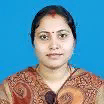International Journal of Image, Graphics and Signal Processing (IJIGSP)
IJIGSP Vol. 9, No. 6, 8 Jun. 2017
Cover page and Table of Contents: PDF (size: 581KB)
A Histogram-based Classification of Image Database Using Scale Invariant Features
Full Text (PDF, 581KB), PP.55-64
Views: 0 Downloads: 0
Author(s)
Index Terms
Classification, bag of features, decision tree, histogram, feature extraction
Abstract
Development of advanced technology has increased the size of data and has also created different categories of data. Classifying these different categories of data is the need of the era. We have proposed a method of classifying the image database containing four categories of images like human face, airplane, cup and butterfly. Our approach involves steps like feature extraction, bag of feature creation, histogram representation and classification using decision tree. For feature extraction SIFT (Scale Invariant Feature Transform) algorithm is used since it is invariant to rotation, change of scale, illumination etc. After extracting the features the bag of features concept is used to group the features using k-means clustering algorithm. Then a histogram is plotted for each image in the image database which represents the distributions of data in different clusters. In the final step the most robust, simple and flexible decision tree algorithm is applied on the table created from the histogram plots to obtain the classification result. The experimental observations and the calculated accuracy proves that this method of classification works well for classifying an image dataset having different categories of images.
Cite This Paper
Shashwati Mishra, Mrutyunjaya Panda,"A Histogram-based Classification of Image Database Using Scale Invariant Features", International Journal of Image, Graphics and Signal Processing(IJIGSP), Vol.9, No.6, pp.55-64, 2017. DOI: 10.5815/ijigsp.2017.06.07
Reference
[1]Z. Aghbari and A. Makinouchi,” Semantic approach to image database classification and retrieval,” NII Journal, No. 7, pp. 1-8,2003.
[2]A. Hazra, K. Bhattacharjee, A. Ghosh and T. Biswas, “Image mining techniques for efficient searching of images from internet,” International Journal of Enhanced Research in Science, Technology and Engineering, Vol. 5, No. 4, pp. 83-87, 2016.
[3]A. Kannan, V. Mohan and N. Anbazhagan, “Image clustering and retrieval using image mining techniques,” IEEE International Conference on Computational Intelligence and Computing Research, pp. 1-5, 2010.
[4]R. Sudhir, “A survey on image mining techniques: theory and applications,” Computer Engineering and Intelligent Systems, Vol. 2, No. 6, pp. 44-53, 2011.
[5]P. S. Sarvani and Y. M. Latha, “Image mining,” International Journal of Science and Research, Vol.-2, No.-4, pp. 401-403, 2013.
[6]A. A. Chaugule, S. N. Mali, “Evaluation of shape and color features for classification of four paddy varieties,” International Journal of Image, Graphics and Signal Processing, Vol.-6, No.-12, pp. 32:38, 2014.
[7]K. Arai, I. N. Abdullah, H. Okumura, “Image retrieval based on color, shape and texture for ornamental leaf with medicinal functionality images,” International Journal of Image, Graphics and Signal Processing, Vol. 6, No. 7, pp.10:18, 2014.
[8]D. Lu and Q. Weng, “A survey of image classification methods and techniques for improving classification performance,” International Journal of Remote Sensing, Vol. 28, No. 5, pp. 823-870,2007.
[9]A. Aichert, “Feature extraction techniques,” CAMP Medical Seminar WS0708, pp. 1-8, 2008.
[10]K. Lu and D. Yang, “Image processing and image mining using decision trees,” Journal of Information Science and Engineering, pp. 989-1003, 2009.
[11]R. Azhar, D. Tuwohingide, D. Kamudi, Sarimuddin and N. Suciati, “Batik image classification using SIFT feature extraction, bag of features and support vector machine,” Elsevier, pp. 24-30, 2015.
[12]L. Hussain, W. Aziz, Z. H. Kazmi and I. A. Awan, “Classification of human faces and non faces using machine learning techniques,” International Journal of Electronics and Electrical Engineering, Vol. 2, No. 2, pp. 116-123, 2014.
[13]X. Bai and V. Cherkassky, “Gender classification of human faces using inference through contradictions,” International Joint Conference on Neural Networks, IEEE, pp. 746-750, 2008.
[14]R. Zhang and Z. Zhang, “Image database classification based on concept vector model,” International Conference on Multimedia and Expo, IEEE, pp. 93-96, 2005.
[15]L. Jiang, W. Wang, X. Yang, N. Xie and Y. Cheng, “Classification methods of remote sensing image based on decision tree technologies,” Computer and computing technologies in agriculture IV, Vol. 344, pp. 353-358, 2011.
[16]A. P. Pooja, J. Jayanth and S. Koliwad, “Classification of RS data using decision tree approach,” International Journal of Computer Applications, Vol.-23, No.-3, pp. 7-11, 2011.
[17]D. Wilking and T. Rӧfer, “Realtime object recognition using decision tree learning,” Lecture notes in Artificial Intelligence, Springer, pp. 556-563, 2005.
[18]K. Stapor, L. Pawlaczyk, R. Chrástek, H. Niemann and G. Michelson, “Automatic segmentation and classification of fundus eye images for glaucoma diagnosis,” Springer, pp.65-69, 2004.
[19]M. P. Patil and S. R. Kolhe, “Automatic image annotation using decision trees and rough sets,” International Journal of Computer Science and Applications, Vol.11, No. 2, pp. 38-49, 2014.
[20]D. G. Lowe, “Distinctive image features from scale-invariant key points,” International Journal of Computer Vision, PP. 91-110, 2004.
[21]S. O’hara and B. A. Draper, “Introduction to the bag of features paradigm for image classification and retrieval,” Arxiv preprint arxiv:1101.3354, pp. 1-25, 2011.
[22]J. Han and M. Kambar, “Data mining concepts and techniques,” Elsevier, 2006.

